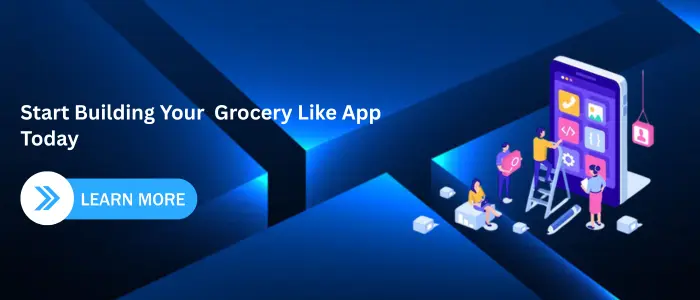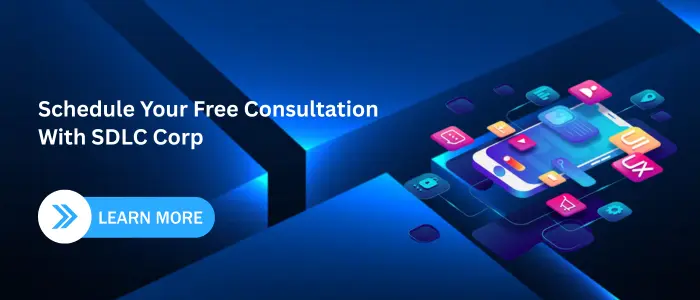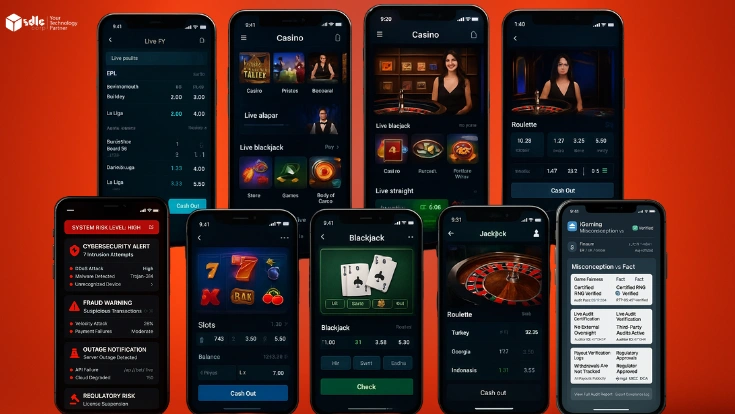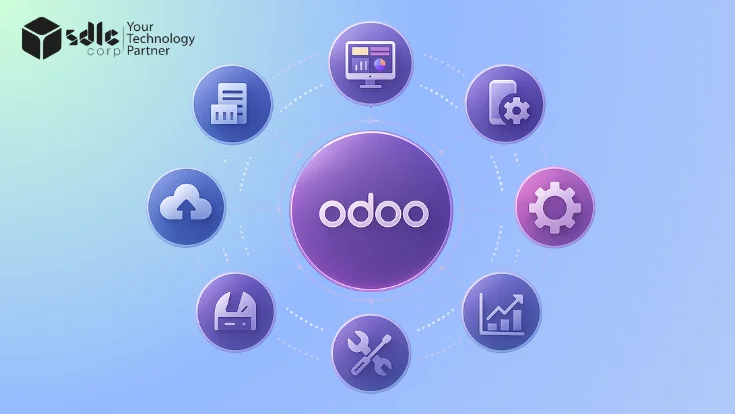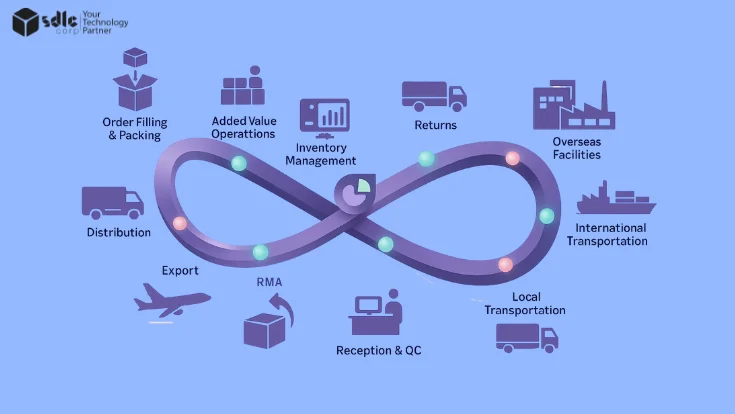Introduction
In today’s convenience-driven world, grocery apps like Coles have transformed how consumers shop by offering real-time tracking, personalized deals, and seamless experiences. With the online grocery market expected to exceed $200 billion by 2027, building a Coles-style app is a timely, high-potential investment. The cost to build a grocery app like Coles typically ranges from $20,000 to $100,000, depending on whether it’s a basic, mid-level, or advanced solution.
In this blog, we’ll cover the key cost factors, must-have features, tech stack, monetization models, and development timeline giving you a complete roadmap to launching a successful grocery delivery app.
Why Businesses Are Building Apps Like Coles
As digital convenience reshapes consumer expectations, apps like Coles have emerged as leaders in transforming the grocery shopping experience. For businesses evaluating the cost to build a grocery app like Coles, the investment goes beyond technology it’s about tapping into a lifestyle shift where speed, personalization, and mobile access drive customer loyalty.
By choosing the right grocery delivery app development approach, you not only meet evolving demands but also gain operational advantages and long-term scalability.

Here are four compelling reasons to invest in a Coles-like grocery app:
- Cater to Digital-First Customers
Offer seamless ordering, delivery tracking, and mobile payments through a responsive grocery app tailored to modern needs. - Maximize Retention with Personalization
Integrate smart carts, saved preferences, and loyalty programs to keep users engaged and coming back. - Streamline Operations & Fulfillment
Automate delivery logistics, stock updates, and real-time status tracking to reduce manual efforts and errors. - Gain Competitive Edge Through Innovation
A strategic grocery delivery app development model helps you stand out in a saturated eCommerce landscape.
Essential Features Required to Build a Grocery Delivery App Like Coles
User-Side Features
1. User Registration & Login

Secure login with OTP, email, or social media for quick and hassle-free app access.
- Login via phone, email, Google, or Facebook
- OTP-based verification ensures security
- Supports password less login options
2. Product Browsing & Smart Filters
Browse products easily using filters by price, category, brand, and dietary preferences.
- Multi-level category filtering
- Search by brand or product keyword
- Real-time inventory sync
3. Cart & Checkout

Add items to the cart and pay securely via multiple options in a fast checkout process.
- Edit quantities or remove items easily
- Apply coupons or vouchers
- Choose delivery slots before confirming
4. Real-Time Order Tracking
Track orders live on a map with real-time driver status and estimated arrival times.
- Map view with driver icon
- In-app delivery notifications
- Contactless delivery updates
5. Multiple Payment Options

Offer cards, UPI, wallets, and cash on delivery for maximum customer convenience.
- PCI-compliant card processing
- Wallet and reward point integration
- Enable COD per region
6. Loyalty Offers & Discounts
Boost retention with cashback, discount codes, and exclusive loyalty-based pricing.
- Tier-based loyalty system
- Automatic coupon suggestions
- Reward usage tracking
Admin-Side Features
1. Admin Dashboard

Manage orders, performance, and user activity with centralized real-time data visualization and KPIs.
- Visual reports and widgets
- Toggle metrics by day/week/month
- Manage multi-city operations
2. Product & Inventory Management
Easily add or remove products, set pricing, and track inventory in real time.
- Low-stock alerts
- CSV product import/export
- Multi-brand categorization
3. Order & Refund Management

Control order flows, approve refunds, and manage delays to ensure smooth operations.
- Cancel/reschedule orders
- Trigger refund processes
- Assign manual replacements
4. Customer Management
Access user profiles, complaints, and loyalty history for improved support and personalization.
- Filter customers by behavior
- Assign loyalty tiers
- View support logs
5. Campaign & Discount Manager

Run promotions, flash sales, and discount rules to increase order volumes.
- Target by region or user type
- Schedule future campaigns
- Track coupon redemption rates
Delivery-Side Features
1. Order Acceptance & Alerts

Drivers receive real-time order alerts and can accept or decline deliveries instantly.
- Instant task notification
- Auto-expiry for unaccepted orders
- Peak hour priority delivery
2. Route Optimization & Navigation
Integrated maps recommend fastest routes for timely and cost-efficient delivery.
- GPS with turn-by-turn nav
- Route reordering in-app
- Live traffic consideration
3. Status Updates

Agents update delivery progress (e.g., out for delivery, delivered) from the app in real time.
- One-tap status updates
- Delivery timestamp logging
- Customer visibility via app
4. Earnings Dashboard

Delivery agents can monitor their daily income, bonuses, and delivery count in-app.
- Weekly/monthly earnings
- Wallet integration
- Tip and incentive breakdown
Technology Stack

Frontend: Flutter / React Native – For cross-platform mobile apps with seamless UI on iOS and Android.
Backend: Node.js / Django – Enables fast server-side logic, API handling, and scalable content delivery.
Real-time Tracking: Google Maps API / Socket.IO – Facilitates accurate route tracking, ETA updates, and live delivery status with low-latency communication.
Database: PostgreSQL / MongoDB – Stores structured and unstructured user and conte
Authentication: Firebase / OAuth – Provides secure logins using OTP, social media, and token-based access.
Payment Gateway: Stripe / Razorpay / PayPal – Manages subscriptions, one-time payments, and global currency transactions.
Hosting: AWS / Google Cloud Platform – Scales infrastructure with secure, high-performance cloud and CDN solutions.
Choosing the right tech stack is crucial for performance, scalability, and efficiency. Explore the latest tools driving innovation in 2025 in our blog on Must-Have Mobile App Development Tools.
Market Trends in Grocery Delivery
The grocery delivery industry continues to grow at a rapid pace, driven by shifting consumer habits, AI automation, and hyperlocal fulfillment networks. the global online grocery market is projected to surpass $250+ billion, fueled by demand for faster deliveries, personalized deals, and subscription-based shopping models. Key trends shaping grocery delivery apps
Hyperlocal & 10-Minute Delivery Growth
AI-Based Personalization Becomes Standard
Subscription & Membership Economy Rising
More users prefer paid memberships (similar to Coles Plus) to access:
- Free deliveries
- Priority support
- Exclusive discounts
Contactless & Autonomous Fulfillment
Retailers are integrating:
- RFID-based stock tracking
- Automated picking tools
- Robotics in warehouses
Surge in Multi-Platform eCommerce Ecosystems
Leading brands are expanding into:
- Grocery
- Pharmacy
- Household essentials
- Fresh produce
This expands market potential for businesses planning to build a grocery delivery app like Coles and aiming to scale across multiple retail categories.
Why Choose SDLC Corp for Grocery App Development?
Expertise in Grocery, Retail & Delivery Platforms
We have delivered apps similar to:
- Coles
- Instashop
- Blinkit
- Zepto
Our team understands multi-vendor systems, inventory workflows, warehouse operations, and last-mile delivery networks.
Advanced Feature Integrations
SDLC Corp specializes in integrating:
- AI-based product recommendations
- Dynamic pricing engines
- Route optimization systems
- ERP & POS sync
- Multilingual & multi-currency modules
End-to-End Development – From Idea to Launch
Our services include:
- Market research
- UI/UX design
- Frontend & backend development
- QA testing
- App Store deployment
- Post-launch maintenance
Transparent Pricing & Faster Development Timelines
We offer flexible pricing models based on:
- MVP builds
- Mid-level solutions
- Enterprise-grade apps
This helps you optimize your grocery app development cost without compromising quality.
Long-Term Partnership for Scaling & Optimization
We don’t just build apps we help them grow.
SDLC Corp provides:
- Data analytics
- Performance optimization
- Feature upgrades
- Infrastructure monitoring
- Ensuring your grocery app remains competitive and scalable as market trends evolve.
Cost Breakdown to Develop a Grocery App Like Coles
| Tier | Basic MVP | Mid-Level (Includes Basic) | Advanced (Includes Basic + Mid-Level) |
|---|---|---|---|
| Cost | $20,000 – $30,000 | $40,000 – $50,000 | $60,000 – $100,000+ |
| Timeline | 4–6 Weeks | 10–12 Weeks | 20–24 Weeks |
| Included Features |
|
|
|
| Security | SSL encryption, token-based login | Role-based access, 2FA enabled | GDPR compliance, end-to-end encryption |
| Integrations | Google Maps, Razorpay, Firebase | Stripe, Twilio, Social Login APIs | CRM, AI Engine, ERP, Multilingual CMS |
| Tech Stack | Flutter, Node.js, Firebase | React Native, Laravel, MongoDB | Microservices, AWS, PostgreSQL |
| Analytics | User activity & order logs | Sales, traffic & engagement tracking | Behavioral insights, churn prediction, heatmaps |
Factors Affecting the Cost of a Coles-Like Grocery App

- App Complexity & Feature Set
The number and complexity of features like live tracking, loyalty rewards, or filters directly impact development time and cost. - Platform Choice (iOS, Android, or Both)
Developing for both platforms or using native development increases the cost compared to a single-platform or cross-platform build. - UI/UX Design Customization
Apps with personalized UI, animations, or accessibility support require more design effort, raising overall design and testing costs. - Third-Party Integrations
Adding payment gateways, map APIs, analytics tools, or CRM integrations increases both development effort and licensing expenses.
Monetization Strategies

Delivery Fees
Charge customers based on order value, delivery distance, or speed, generating consistent income on every grocery order.Subscription Model
Offer paid membership plans with benefits like unlimited free deliveries, priority support, exclusive offers, and reward points.In-App Advertising
Collaborate with FMCG brands to display sponsored banners, promoted products, and featured listings inside the app interface.Commission on Sales
Earn a percentage commission from third-party sellers who use your platform to list and sell their grocery products.Affiliate Marketing
Recommend external services or products and earn commissions through in-app affiliate partnerships with trackable referral links.
Development Process to Build a Grocery App

1. Market Research & Requirement Analysis
Understand your target users, competitors, market trends, and essential features to define app goals and USPs clearly.
2. Wireframing & UI/UX Design
Create user journey flows and high-fidelity wireframes that reflect intuitive navigation, modern design, and brand consistency.
3. Frontend & Backend Development
Build the user-facing interface (mobile app) and backend systems (APIs, databases, admin panels) using the chosen tech stack.
4. Integration of Core Features
Implement must-have functionalities like cart, payment, real-time tracking, user login, push notifications, and product filters.
5. Testing & Quality Assurance (QA)
Conduct rigorous functional, UI, and security testing across devices and platforms to ensure a bug-free and reliable app.
6. Deployment & App Store Launch
Deploy the app to iOS and Android stores, ensuring compliance with guidelines, metadata, and pre-launch marketing readiness.
7. Post-Launch Support & Updates
Offer continuous app maintenance, bug fixes, feature upgrades, and performance improvements to retain users and scale smoothly.
Conclusion
Developing a grocery app like Coles is a strategic step toward meeting modern consumer demands and capitalizing on the growing digital retail space. Every element from feature selection and UI/UX design to platform choice and third-party integrations affects the total development cost, timeline, and long-term success of your application. As a leading mobile app development company, SDLC CORP specializes in building scalable, user-friendly grocery delivery apps tailored to your business goals. Our team ensures every solution is optimized for performance, security, and future growth.
Ready to turn your grocery app idea into reality? Contact SDLC CORP today for a free consultation and receive a customized development roadmap for your project.
Related Blogs You Should Explore:
FAQ's
How Long Does It Take to Build a Grocery App Like Coles?
Building a grocery app typically takes 4 to 24 weeks depending on the number of features, design complexity, platform choice (iOS, Android, or both), third-party integrations, and testing. Larger-scale projects may extend further based on customization needs.

